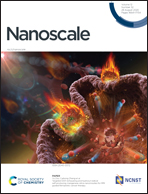Metal–organic framework derived amorphous VOx coated Fe3O4/C hierarchical nanospindle as anode material for superior lithium-ion batteries†
Abstract
Lithium-ion batteries (LIBs) are widely regarded as a promising electrochemical energy storage device, due to their high energy density and good cycling stability. To date, the development of anode materials for LIBs is still confronted with many serious problems, and much effort is required for constructing more ideal anode materials. Herein, starting with metal–organic frameworks (MOFs), an amorphous VOx coated Fe3O4/C hierarchical nanospindle has been successfully synthesized. The obtained Fe3O4/C@VOx nanospindle has a uniform particle size of ∼100 nm in diameter and ∼400 nm in length and consists of ultrafine Fe3O4 nanoparticles (∼5 nm) embedded in a porous carbon matrix as the core and an amorphous VOx layer as the shell. Notably, as the anode material for LIBs, Fe3O4/C@VOx delivers a high coulombic efficiency (74.2%) and a large capacity of 845 mA h g−1 after 500 cycles at 1000 mA g−1. A prominent discharge reversible capacity of 340 mA h g−1 is also still retained at 5000 mA g−1. More importantly, the presented facile MOF-derived route could be easily extended to other functional materials for widespread applications.



 Please wait while we load your content...
Please wait while we load your content...